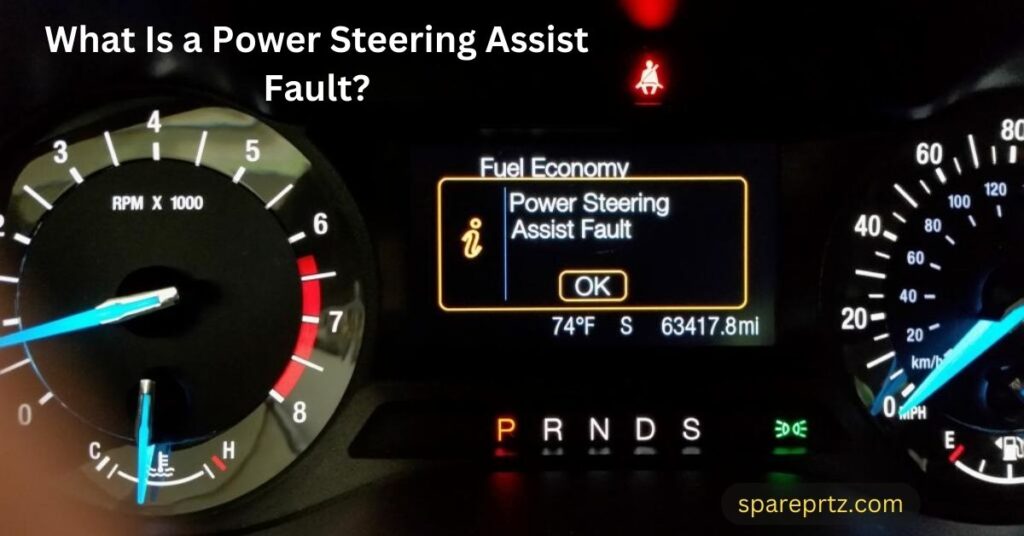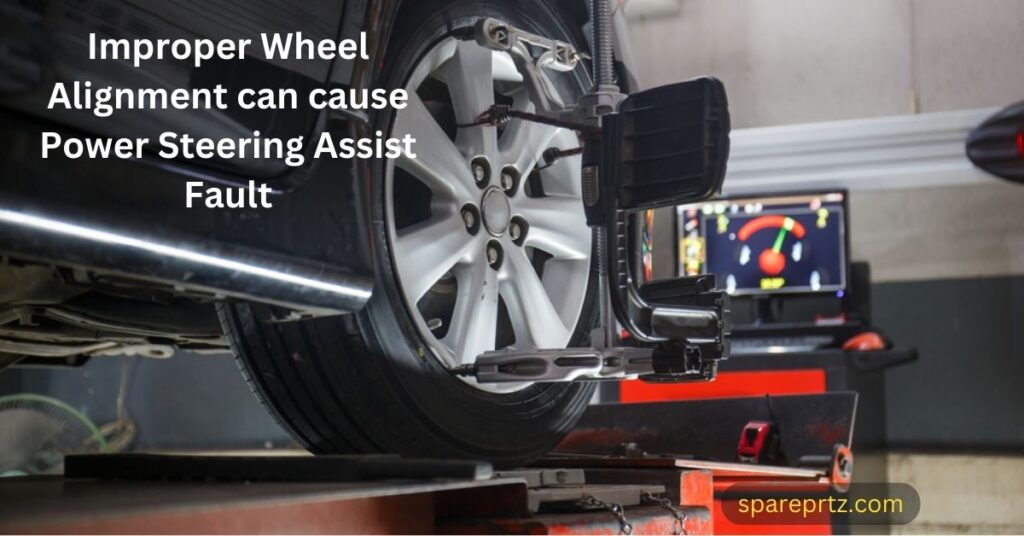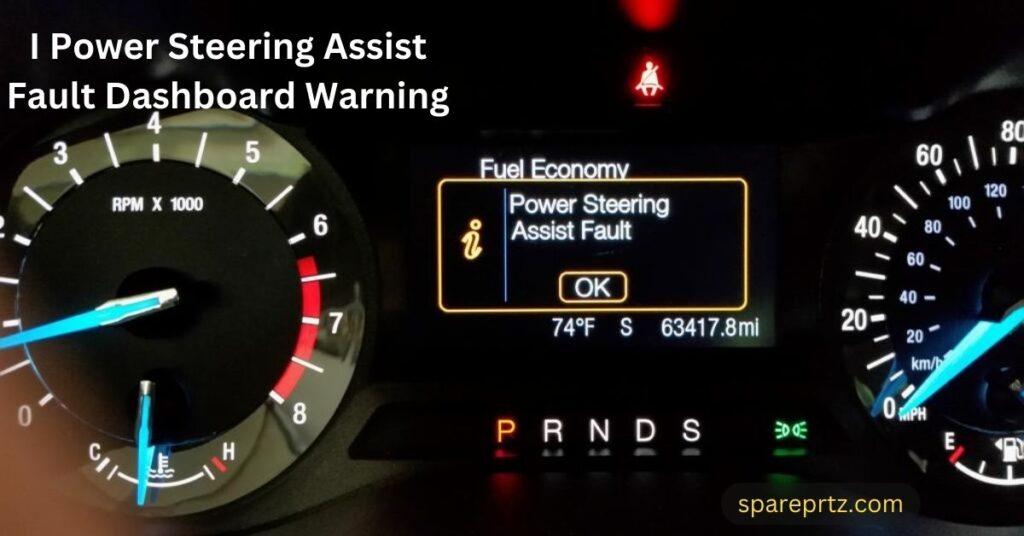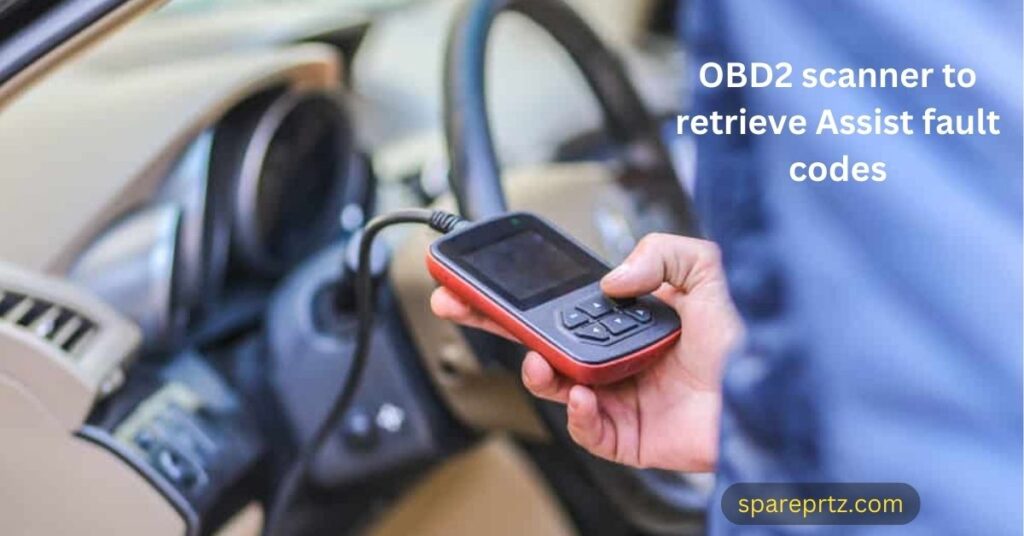How to Fix Power Steering Assist Fault? – Causes, Symptoms, and Solution
Power steering is essential to modern vehicles, making driving easier and safer. It allows for better control, enhancing the overall driving experience. However, like any other system in your car, the power steering system is not immune to issues.
If you encounter a power steering assist fault, it’s crucial to understand what it means, recognize the symptoms, and know how to address it effectively. This comprehensive guide will investigate the causes, symptoms, and step-by-step solutions to fix a power steering assist fault.
What Is a Power Steering Assist Fault?
A power steering assist fault is a mechanical or electrical malfunction within the vehicle’s power steering system. This fault can manifest as various symptoms, including warning lights on the dashboard and difficulties in steering.

The severity of the defect can vary, ranging from minor inconveniences to potentially dangerous situations. To address the problem correctly, it’s essential to identify the root cause.
Causes of Power Steering Assist Fault
Here are some common reasons why power steering issues may occur:
- Low Power Steering Fluid: Both hydraulic and electrical power steering systems rely on steering fluid to operate smoothly. Low power steering fluid levels can lead to increased effort when steering. It’s crucial to check the fluid level regularly and address any leaks promptly.
- Bad Steering Angle Sensor: The power steering assist system relies on a steering angle sensor to determine the steering wheel’s position. A malfunctioning sensor can trigger a power steering assist fault and affect other vehicle systems like traction control.
- Wheel Alignment Problems: Severe wheel misalignment can confuse the vehicle’s sensors, leading them to believe there is a steering issue. This can result in a power steering assist fault warning.

- Blown Fuse: In some cases, a blown fuse related to the power steering pump or system can cause a fault. Fuses should not blow under normal conditions, so investigating the cause of the blown fuse is crucial.
- Electrical Faults: Electrical issues can be responsible for power steering problems, especially in vehicles with electric power steering systems. These faults may be due to a low battery, damaged wiring, or faulty connectors within the steering system.
- Failing Belt: Traditional power steering setups use a belt connected to the engine to harness power. If this belt begins to fail, it can lead to power steering issues and generate unusual sounds when turning.
- Bad Power Steering Pump: Both traditional hydraulic and modern electric power steering systems include pumps responsible for fluid circulation. While pump failure is less common, it can still result in a power steering assist fault.
Symptoms of Power Steering Assist Fault:
Recognizing the signs and symptoms of a power steering assist fault is crucial for timely intervention. Here are common indicators of a power steering problem:
1. Difficulty in Steering:
One of the primary symptoms is increased difficulty when turning the steering wheel. You may notice that it requires more effort to maneuver the vehicle, especially at lower speeds or when parking.
2. Dashboard Warning Lights:
Most modern vehicles have warning lights illuminating when a fault is detected. In the case of power steering issues, you may see a warning light on your dashboard, such as the power steering system warning icon.

3. Unusual Noises:
Strange or unusual noises when turning the steering wheel can indicate a problem. These noises may include squealing, whining, or grinding sounds, suggesting issues with the power steering components.
4. Steering Wheel Misalignment:
If your steering wheel is consistently off-center, even when driving straight, it could be a sign of a power steering fault. This misalignment may lead to poor vehicle handling and uneven tire wear.
5. Intermittent Assist:
The power steering assistance may work intermittently, making your steering unpredictable. This inconsistency can be particularly hazardous during sudden maneuvers or emergencies.
How to Fix a Power Steering Assist Fault – Step-by-Step Guide
We’ve explored the potential causes and symptoms of a power steering assist fault. Let’s outline the steps to address and resolve the issue effectively:
Step 1: Check the Power Steering Fluid
Begin by checking the power steering fluid level in your vehicle’s reservoir. If the fluid is low, top it off with the recommended fluid for your vehicle (refer to the owner’s manual). Investigate for any signs of leaks, and if found, repair them before refilling the system. Follow the manufacturer’s recommended fluid replacement intervals (typically every four years or 50,000 miles) to ensure proper maintenance.
Step 2: Use an OBD2 Scanner
If a power steering assist fault message appears on your dashboard, use an OBD2 scanner to retrieve fault codes. These codes provide valuable information about the specific issue triggering the warning light. Ensure the OBD2 scanner is compatible with the power steering assist system, depending on your vehicle’s make and model.

Step 3: Inspect Wheel Alignment
Inspect your vehicle’s wheel alignment if the OBD2 scanner reveals a problem with the steering angle sensor. Check for any misalignment issues that may affect the sensor’s readings. If the steering wheel is consistently off-center, it may indicate a wheel alignment problem that needs correction.
Step 4: Replace Steering Angle Sensor
Consider replacing the steering angle sensor if the wheel alignment appears fine, but the error codes persist. Depending on your vehicle, this may require removing the steering wheel and, in some cases, programming the new sensor (consult your service manual).
Step 5: Address Electrical Faults
Troubleshoot any electrical faults by inspecting fuses, wiring, and connectors associated with the power steering system. If a blown fuse is identified, replace it with the appropriate rating specified in your owner’s manual. Examine the wiring and connectors for damage or wear, replacing any compromised components.
Step 6: Address Belt Issues
For vehicles with belt-driven power steering systems, investigate any unusual sounds during steering. Safely lift the car and have a friend turn the steering wheel while you inspect the belt for wear and tension. Adjust or replace the belt as necessary, following your service manual’s guidelines.
Step 7: Consider Power Steering Pump Replacement
If none of the previous steps resolve the issue, and the power steering pump is suspected, consult your service manual for guidance. Replacing the power steering pump may be necessary in rare cases, especially if it is the root cause of the fault.
Video Guide:
Conclusion:
A power steering assist fault can cause a troublesome situation. By understanding the causes and recognizing the symptoms, you can take the necessary steps to diagnose and resolve the issue effectively. Regular maintenance, fluid checks, and prompt attention to warning lights can go a long way in preventing power steering problems.
If you encounter a power steering assist fault, follow the step-by-step guide provided in this article to address and fix the issue. Remember that safety should always be a top priority when dealing with steering system problems, so seek professional assistance. With proper care and attention, you can ensure that your power steering system continues to provide the ease and control you rely on while driving.
Most Related Articles:
- What Is Round Cylinder On Top Of A Classic Car Engine? All About Air Filters in 2024
- Can a Blown Fuse Affect Electric Power Steering? Best Guide in 2024
- Can A Bad Power Steering Pump Cause A Rough Idle? Causes and Fixes in 2024
- What Happens if You Throw a Car Battery in Water? – Real Dangerous Explosion
- Can You Use Pledge on Car Interior: Impact of Pledge on Different Parts of Car







